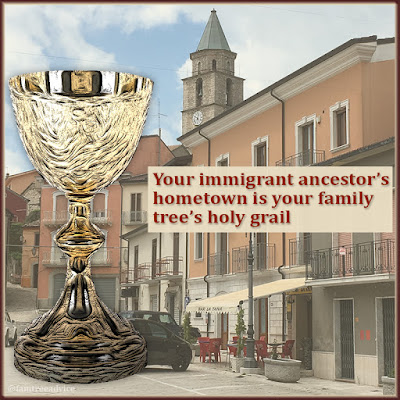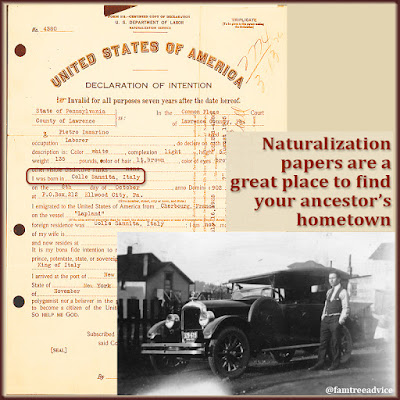I've been all over the place with my genealogy research lately. That's fine. It's all fun and helps me make progress. But since I've got a long weekend, I want to do some carefully targeted research.
Here are my 4 steps for creating my targeted research plan. Think about how this applies to your research.
1. Choose Your Most Important Goal
If you've read a few of my articles, you probably know I'm trying to find out why my parents share some DNA. If there's a common ancestor, I want to know who it is. I'd like to figure this out while my parents are still able to have a laugh about it.
2. Look at the Research You've Done
I've built the daylights out of both their trees. Lately I've been working on one of Mom's under-developed branches. This branch's hometown is so small, it was common for the young ladies to marry men from another town. Did one of those grooms come from one of Dad's towns?
DNA Painter showed that Mom and another match (I know exactly who he is) overlap in 2 places on Dad's chromosomes. But I have no inkling of a relationship between Mom and this other match.
The Leeds Method gave me a way to examine Mom and Dad's shared DNA matches. But I didn't reach a conclusion.
 |
| Tools and methods only got me so far. Now I've got a theory, and I'll work to prove or disprove it. |
I've looked at their shared matches on Ancestry DNA, and reached out to many matches with no real progress. Some offer no family tree. Those who do have a tree don't have a visible connection to me.
I made a spreadsheet (yes, another spreadsheet!) of my parents' 8 shared DNA matches. I included the number of centiMorgans (cMs) they shared with each and across how many segments. This helped me see which matches skewed more toward Mom, and which leaned more toward Dad. I made note of familiar last names in the available family trees.
3. Decide Where It's Best to Focus
Even though they're not the closest matches, I decided to focus on 3 matches with a family tree. A 4th match has a tree, and it's entirely incorporated into mine because of our relationship. But her tree is entirely on Dad's side of the family.
4. Spell Out Your Plan of Action
For the 3 matches with undeveloped family trees, I latched onto a familiar name.
- Donato Zerrillo was born in 1896 in the same town as my Dad's father. He's in my tree with a lot of relatives. I can explore his branches further to see if any lead to Mom's family.
- Salvatore Antonio Pozzuto was born in 1884, also in my Dad's father's town. I need to give his ancestors more attention, too. I'll see where his branches lead.
- Giuseppe Leone was born in 1882 in the same town as my Mom's father. I've already got a working theory to try to prove. Giuseppe's father was Michele Leone. There were 2 Michele Leones in town born a year apart. One of them was my 2nd great uncle. If this DNA match is a descendant of my 2nd great uncle, that would make total sense. And get this: I already know his relationship to Dad. He and I share my 4th great grandfather Pietro diPaola. We have a half 4th cousin once removed relationship.
The 3rd option seems to be the most important to follow. I already have my paternal relationship nailed down. And I think I have a good lead on the maternal relationship.
 |
| If this theory is true, I'll have 1 DNA match closely connected to my 2 parents. |
My goal this weekend is to try to connect 1882 Giuseppe Leone to my 2nd great uncle Michele Leone.
If I tackle these, or if I try and strike out, I can get back to my aimless-but-fun family tree research.

















